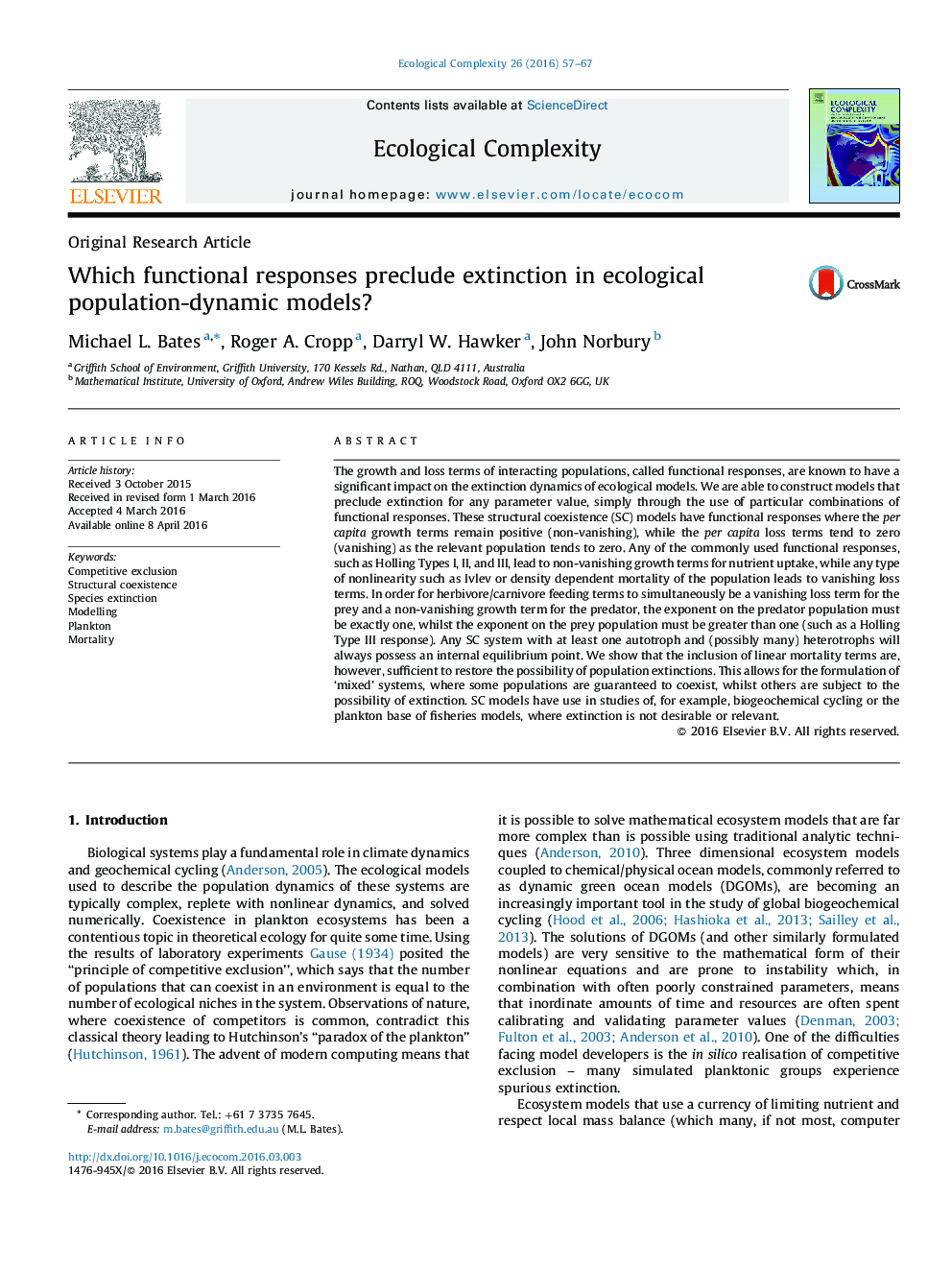| کد مقاله | کد نشریه | سال انتشار | مقاله انگلیسی | نسخه تمام متن |
|---|---|---|---|---|
| 4372331 | 1617088 | 2016 | 11 صفحه PDF | دانلود رایگان |
• Certain combinations of functional responses ensure coexistence in ecological models.
• We show which functional responses lead to these “structural coexistence” models.
• Mixed models, where some populations always coexist, whilst others admit extinction.
• Structural coexistence has application in biogeochemical and fisheries models.
The growth and loss terms of interacting populations, called functional responses, are known to have a significant impact on the extinction dynamics of ecological models. We are able to construct models that preclude extinction for any parameter value, simply through the use of particular combinations of functional responses. These structural coexistence (SC) models have functional responses where the per capita growth terms remain positive (non-vanishing), while the per capita loss terms tend to zero (vanishing) as the relevant population tends to zero. Any of the commonly used functional responses, such as Holling Types I, II, and III, lead to non-vanishing growth terms for nutrient uptake, while any type of nonlinearity such as Ivlev or density dependent mortality of the population leads to vanishing loss terms. In order for herbivore/carnivore feeding terms to simultaneously be a vanishing loss term for the prey and a non-vanishing growth term for the predator, the exponent on the predator population must be exactly one, whilst the exponent on the prey population must be greater than one (such as a Holling Type III response). Any SC system with at least one autotroph and (possibly many) heterotrophs will always possess an internal equilibrium point. We show that the inclusion of linear mortality terms are, however, sufficient to restore the possibility of population extinctions. This allows for the formulation of ‘mixed’ systems, where some populations are guaranteed to coexist, whilst others are subject to the possibility of extinction. SC models have use in studies of, for example, biogeochemical cycling or the plankton base of fisheries models, where extinction is not desirable or relevant.
Journal: Ecological Complexity - Volume 26, June 2016, Pages 57–67
